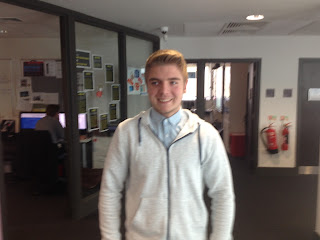Dwayne is a 17 year old student. He enjoys sports and spends most of his spare time on social media. The part of Dwayne will be played by Sam Merrison. Sam is a good choice for this role as he is confident in front of camera and is able to follow instructions.

George is a 24 year old deputy head of sixth form. He enjoys sports and leading people. He spends his spare time watching football and on social media.
This part will be played by Lewis Molloy. Lewis is a good choice for this role as he is confident in front of camera and is more than able to follow instructions.















